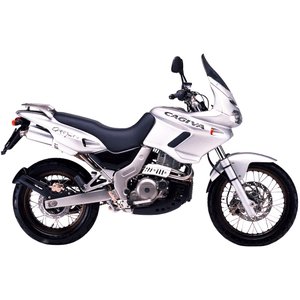Cagiva Canyon 500 [1998-2001] Review: The Quirky Italian Trailblazer That Divided Riders
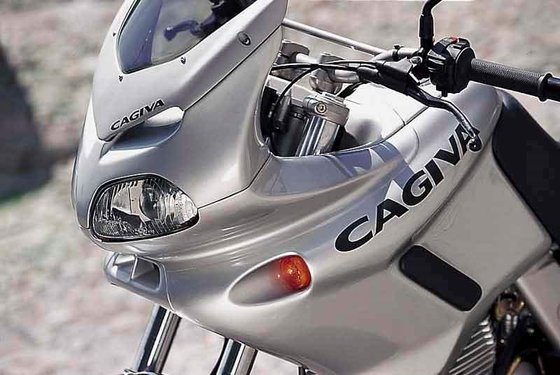
Introduction
The late '90s dual-sport market was a battlefield of practicality versus personality. In this era of utilitarian Japanese trail bikes and emerging European middleweights, the Cagiva Canyon 500 arrived as a polarizing Italian contender. With its bug-eyed fairing, Rotax-derived engine, and ambitious "city slicker meets dirt explorer" ethos, this air-cooled single-cylinder machine still sparks debates among vintage motorcycle enthusiasts. After spending a week with a meticulously maintained 2001 model, here's why this underdog deserves both admiration and cautious consideration.
Design & Ergonomics: Form Over Function?
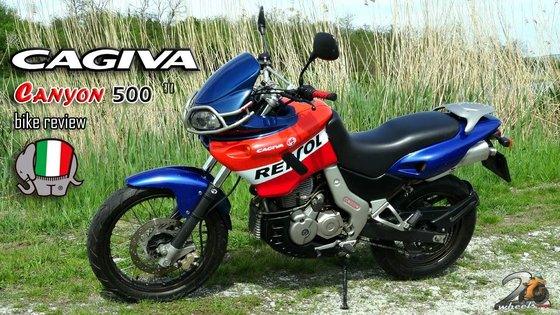
At first glance, the Canyon 500's styling remains its strongest asset. The twin halogen headlights under a tiny windscreen give it an endearing "angry hornet" face that aged better than many contemporaries. The 795mm (31.3") seat height feels accessible for average-height riders, though the narrow perch and basic foam padding reveal its budget origins during hour-long rides.
The 20-liter (5.28 US gal) tear-drop fuel tank dominates the visual profile, complemented by a surprisingly useful rear rack. However, the plastic side panels and switchgear feel flimsy compared to Japanese rivals. Our test bike's faded decals and slightly misaligned fairing panels whispered tales of Cagiva's infamous build quality quirks.
Engine & Performance: The Vibrant Heart
Power comes from a 498cc single-cylinder Rotax mill producing 34 HP (24.8 kW) at 6,500 RPM and 39 Nm (28.8 lb-ft) torque at 5,200 RPM. Cold starts required patience with the finicky carburetor, but once warmed up, the engine delivers a satisfying bark through the stock exhaust.
Key Characteristics:
- Low-Range Grunt: Below 4,000 RPM, the engine feels agricultural but tractable - perfect for urban filtering or technical trails
- Mid-Range Surge: Between 4,500-6,000 RPM, the Canyon comes alive with enough punch for highway overtakes
- High-Range Vibes: Past 100 km/h (62 mph), handlebar vibrations turn intrusive, making the 140 km/h (87 mph) top speed more theoretical than enjoyable
The 5-speed transmission shifts with a satisfying clunk, though finding neutral at stops became a mini-game. Chain maintenance is crucial given the 14/45 sprocket combo and 114-link chain - our test unit's aftermarket O-ring chain showed significantly smoother power delivery.
On-Road Manners: Urban Warrior, Highway Compromises
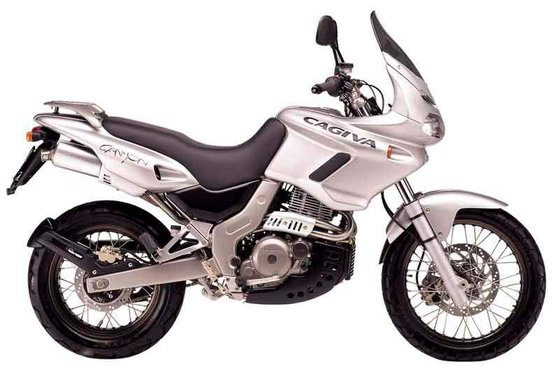
City Riding:
- Narrow 1,463mm (57.6") wheelbase enables surprising agility
- Upright riding position offers excellent visibility
- Soft suspension soaks up potholes but dives alarmingly under hard braking
Highway Limitations:
- Wind protection vanishes above 90 km/h (56 mph)
- Bench seat encourages weight-shifting to combat numbness
- Fuel consumption averages 5.2 L/100km (45 mpg), giving 380km (236 mi) range
The 296mm front brake with 4-piston caliper provides adequate stopping power, though feel diminishes when hot. Bridgestone Trail Wing tires (100/90-19 front, 140/80-17 rear) on our test bike offered predictable road manners but struggled in muddy conditions.
Off-Road Capability: Pretender or Contender?
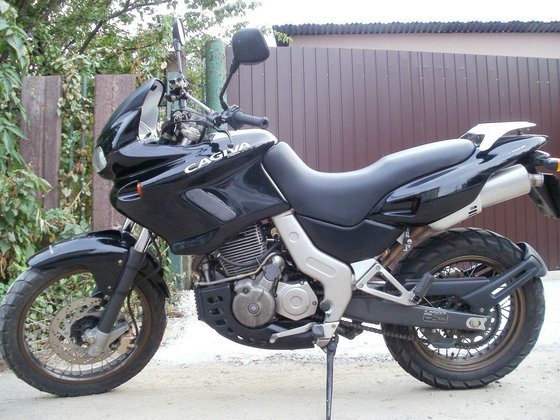
With 170mm (6.7") of non-adjustable suspension travel at both ends and 222mm (8.7") ground clearance, the Canyon 500 appears trail-ready on paper. Reality is more nuanced:
Strengths:
- Torquey engine excels at hill climbs
- High exhaust clearance avoids rock strikes
- Light(ish) 165kg (363.8 lb) dry weight manageable in technical sections
Weaknesses:
- Basic suspension becomes overwhelmed at pace
- Street-biased tire choice limits grip
- Vulnerable bodywork in tip-overs
During a mixed terrain test ride, the Canyon handled gravel fire roads confidently but bottomed out repeatedly on whoops. Switching to knobby tires (available at MOTOPARTS.store) would transform its off-road persona.
Competition: How It Stacks Up
The Canyon 500 faced fierce rivals in the '90s middleweight dual-sport segment:
| Model | Power | Weight | Fuel Capacity | Key Advantage | |----------------|-------|---------|---------------|------------------------------| | Cagiva Canyon 500 | 34 HP | 165kg | 20L | Unique styling, low-cost charm | | Aprilia Pegaso 650 | 50 HP | 175kg | 18L | Liquid-cooled reliability | | BMW F650 Funduro | 48 HP | 183kg | 17L | Build quality, aftermarket support | | Suzuki Freewind 650 | 50 HP | 189kg | 19L | Smooth V-twin, low maintenance |
While competitors offered more sophistication, the Canyon's simplicity appeals to hands-on riders. However, the Aprilia and BMW's liquid-cooled engines tolerate stop-and-go traffic better, while the Suzuki's V-twin delivers smoother highway performance.
Maintenance: Keeping the Canyon Alive
Ownership requires vigilance. Key considerations:
Engine Care:
- Valve Adjustments: Every 5,000 km (3,100 mi)
- Intake/Exhaust: 0.05-0.10mm (0.002-0.004") cold
- Spark Plugs: NGK BPR8ES (standard) or BPR8EIX (iridium upgrade)
- Oil Changes: Every 3,000 km (1,864 mi) with 15W-50 mineral oil
Chassis Checks:
- Fork Oil: 655ml per leg of SAE 7.5W (upgrade to 10W for heavier riders)
- Tire Pressures:
- Road: 1.8 bar (26 psi) front / 2.0 bar (29 psi) rear
- Off-Road: 1.4 bar (20 psi) front / 1.7 bar (25 psi) rear
- Chain: Clean every 500 km (310 mi), tension at 25-35mm (1-1.4")
Electrical System:
- Upgrade to modern MOSFET regulator-rectifier
- Carry spare fuses and consider LED bulb conversion
MOTOPARTS.store recommendations:
- High-flow air filters for carburetor tuning
- Progressive rate fork springs to reduce dive
- Aluminum pannier racks that bolt to existing mounts
Conclusion: Love It or Leave It
The Cagiva Canyon 500 isn't for everyone. It vibrates like a paint shaker, parts availability requires creativity, and the suspension feels dated against modern rivals. Yet, there's magic in its raw simplicity - a motorcycle that demands engagement and rewards mechanical sympathy.
For riders seeking an affordable entry into vintage dual-sport ownership (with a toolbox permanently in tow), the Canyon delivers character in spades. Just budget for upgraded components from MOTOPARTS.store to address its known weaknesses. In an era of sanitized adventure bikes, this Italian underdog reminds us that imperfection can be infinitely more memorable than clinical competence.



